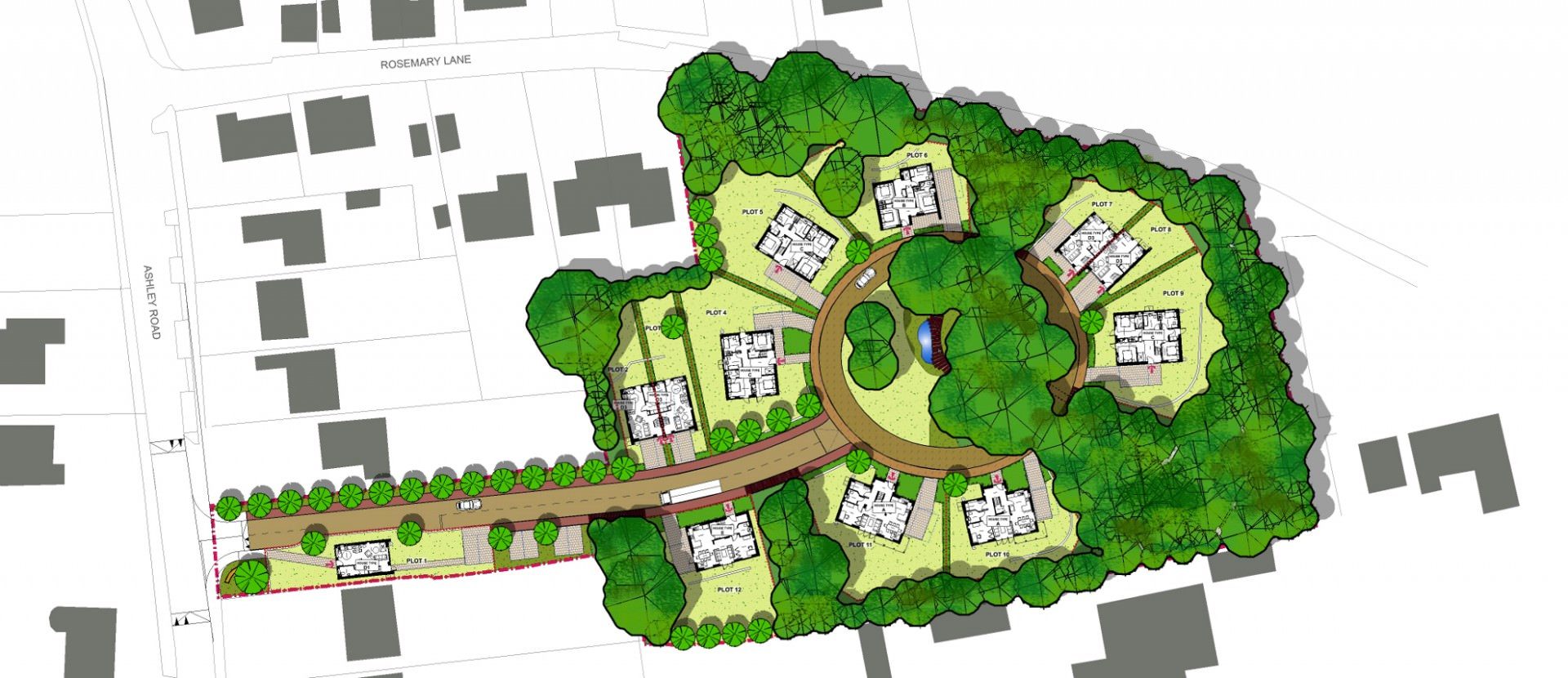‘When we destroy nature, we undermine our very foundations’. You might feel George Eustice’s recent speech is a little flowery and, along with other recent declarations, that’s what it focuses on. Flowers. Well, nature and biodiversity to be more precise. It’s true that the figures in the UK’s 2019 State of Nature report are grim but it would be a mistake to forget the human element when considering the ‘environment’ and focus solely on natural history. This is particularly true for Environmental Impact Assessment (EIA), which must be comprehensive in order to be a useful tool for decision makers. Suggestions made in a recent policy essay to strip out many topics, such as air quality, landscape and heritage to instead focus solely biodiversity will actually devalue EIA. Some of the tangible benefits of EIA are discussed below it might not come as a surprise that they have a common thread.
People and communities; may not be the first things that springs to mind when thinking of undertaking an EIA but perception of a proposed development and, by extension, the developer hinges on how significant environmental issues are handled. EIA provides opportunities to develop a holistic understanding of the area where a proposed development will be sited and of the environmental receptors present. Simply put, environmental receptors are things in, or components of, the environment that may be affected by the development – perhaps most importantly this includes people and communities. With growing public awareness of green ethics and demand for sustainability, understanding the environmental receptors present and finding opportunities to make meaningful enhancements are a powerful tool in creating a positive profile. This enables developments to realise tangible benefits for the communities they’re located in. EIA sometimes tends to focus more on the natural environment and less on the human aspects, which is perhaps one of the underlying reasons why certain projects face such public opposition.
Enhanced decision making; really is the core purpose of EIA. Yes, it’s an iterative process for assessing potentially significant effects on the natural and human environment but the purpose of that assessment is to empower decision-makers, both the developer and consenting authority, by providing the information to make informed choices. It’s fair to say the EIA process doesn’t just improve decision making through improved data either, although this is key, it also promotes collaboration between developers, local authorities and statutory consultees bringing engagement to the fore and allowing a proposed development to be influenced by key stakeholders.
Opportunity to improve project design; is another integral part of EIA. The iterative nature of EIA fits within the normal project lifecycle where the multiple stages of environmental review occur in-line with natural design evolution. Through EIA, opportunities to improve the design can be identified and incorporated leading to developments that not only avoid, reduce or minimise impacts on landscape, biodiversity and air quality etc., but also create a real sense of place for those living in or near them. EIA has, traditionally, tended to focus on the adverse impacts with positive impacts being treated almost as a convenient by-product. However, outcome-based EIA puts positive impacts on an equal footing and helps to drive designs to realise benefits for both the natural environment and people. Using the EIA process to optimise the design, through incorporation of environmental considerations at key stages, helps avoid costly delays and redesign further down the line as well.
Public engagement; or the lack thereof, has been identified as an issue in planning – as far back as at least 1968 where the Royal Town and Planning Institute provided key feedback on the topic to the Skeffington Committee. Although that feedback related to consultation in planning it remains just as relevant for environmental assessment today. The requirement for consultation, both public and otherwise, is stipulated in the EIA regulations and is a key way that EIA strengthens project development. If done correctly, consultation can calm the adversarial attitudes that develop when the public feel they have no agency to influence what happens to the area they live in. Public consultation can also help highlight constraints via local knowledge or help identify areas of community value for mitigation or enhancement. A third benefit of engaging the public, is that it allows promotion of the concept of ‘shared infrastructure’. In short, this is the understanding that developments may have significant benefits for wider society but not always for the people and communities they’re located in. An example of this is national electricity generation. The vast majority of people use electricity that has been generated at power stations located many miles from them. The communities closest to them may be affected in terms of landscape and visual impacts, safety risk or loss of open space but this is rarely considered by the majority of end users. Recognising that some local impact may be a necessary consequence of creating benefits for the wider society can also help to reduce opposition.
Legal compliance; is probably one of the most obvious benefits, however, it’s arguably the least interesting for most people. That’s not to say it’s the least important though, as legal compliance is a primary driving force for all proposed developments. The current requirement for EIA stems from an EU Directive, the most recent iteration is 2014/52/EU, which is transposed into UK law. In England this is the Town and Country Planning (Environmental Impact Assessment) Regulations 2017, which sets out what kind of developments will require EIA and under what circumstances. Whilst legal compliance remains quite dry as a topic, ensuring EIA and Environmental Statements are fully compliant with regulations reduces the risk of legal challenge, or at the very least can contribute to a legal defence. Given the potential cost, time and reputational impacts associated with legal challenges, robust, regulatory compliant environmental assessment is highly desirable. A good example is the recent, failed, attempt by the broadcaster Chris Packham to seek a judicial review of HS2. This challenge appeared to stem from his perception that the Government failed to properly assess the impacts of HS2 on ancient woodlands and other sensitive habitats. In dismissing the claim, the High Court made clear that the environmental impacts of the project had been properly and thoroughly assessed in the EIA, implicitly acknowledging its legal compliance.
Environmental Net Gain; is similar to the soon to be mandatory Biodiversity Net Gain. Environmental Net Gain looks to provide benefits across the whole spectrum of potential impacts, including biodiversity. Environmental Net-Gain seeks to ensure that environmental benefits, over and above the impact of a proposed development, are delivered across a diverse array of topics such as; air quality, cultural heritage and human health. In essence, it strives to broaden the focus of the possible benefits a proposed development delivers. Whilst delivering gains in some topics, like air quality, are already clearly measurable it might seem a little esoteric to seek benefits for things like cultural heritage. After all, how do we measure those gains? It’s true that there isn’t yet a government backed, quantifiable metric for assessing gains in all areas covered by EIA. However, there’s already some precedent in place. It’s hopefully not hard to follow the reasoning; Biodiversity Net-Gain equates to greater natural capital, which in turn equates to greater ecosystem services. Ecosystem services are the quantification of the benefits that the natural environment provides for society. But what are those benefits? They include direct gains for society such as ‘provisioning services’, in the form of wood or food but they also include ‘cultural services’, such as intellectual development, spiritual enrichment, recreation and aesthetic values. From here, it’s not a huge leap to see that wider cultural, or other currently not quantified, enhancements could be codified into a system of measurable benefits. The value of cultural or human focused gains has already been recognised and is embedded within the context of natural capital accounting – albeit a little obscurely and, currently, lacking in scope.
In the end, we have to ask ourselves why development occurs in the first place and, as a product of that, why we’re undertaking an assessment of its impacts on the world around it. It’s common to see written objectives attached to proposed developments along the lines of; ‘boost regional economic growth’, ‘facilitate transport connectivity’ or ‘defend communities from flooding’, but these are just surface level reasons. If we continue to peel away the layers, we always come to the same root cause. People. People are the primary driver for development, they are the designers, the constructors, the environmental receptors, the decision makers and the end users. To factor people, and the human environment, out of the assessment of impacts for proposed development is to wilfully ignore half of a picture. Doing so can only serve to blinker decision makers, hold back progress across the industry and lead to poorer, less cohesive outcomes. In an increasingly complex world, this is not the way forward.
Andrew Kenny, Senior Environmental Consultant, EIA











